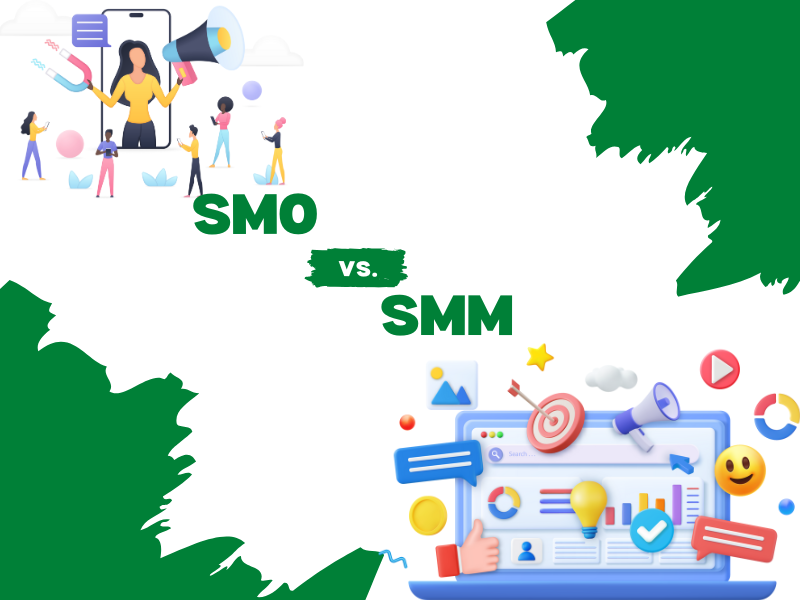SMO stands for Social Media Optimization.
It means making your social media pages (like Instagram, Facebook, LinkedIn, etc.) better so that:
- More people can find your brand
- More engaged with your content like, commenting, and sharing it.
- You observe a boost in website or business traffic.
It’s kind of like cleaning up and decorating your shop, so more people want to walk in. You’re doing the same thing online—with your posts, profile, and content.
A Simple Guide to Social Media Optimization. If you’re using social media for your business, that’s awesome! But just being there isn’t enough. You need to use it smartly so people can find you, follow you, and trust you.
That’s where SMO comes in.
Let’s break it down in simple words.

Why is SMO Important?
Here are a few simple reasons why SMO matters:
1. More People Know You Exist
With SMO, more people come across your brand—even if they don’t know you yet.
2. You Get More Visitors
When your posts are interesting and your profile is complete, people are more likely to visit your website or buy from you.
3. Better Engagement
You get more likes, comments, and shares when your content is optimized and interesting.
4. Builds Trust
People trust brands that show up regularly and post helpful or fun stuff. SMO helps you stay consistent.
5. Helps With SEO Too
Increasing the number of people who share your material also improves your Google results. So SMO helps your website indirectly too!
What Are the Main Parts of SMO?
Let’s go over the key things you need to do for great social media optimization.
1. Set Up Your Profile Properly
Make sure your contact information, website link, profile picture, and bio are all clear and consistent with your brand.
2. Post Good Content
Share stuff that your followers will enjoy or learn from. Mix it up with images, videos, stories, reels, carousels, etc.
3. Use Hashtags Wisely
Hashtags help people find your content. Use ones that are popular in your field, but don’t overdo it.
4. Post at the Right Time
Find out when your audience is online. You can increase your reach by posting at the appropriate time.
5. Talk to Your Followers
Reply to comments and messages. Run polls or ask questions. Social media should be social—not just one-way talking.
6. Keep Your Look Consistent
In your posts, stick to the same color scheme, typefaces, and tone. Just by looking at your content, people should be able to identify your brand.
7. Check Your Stats
Every platform shows insights—see what’s working and what’s not. Then improve based on that.

SMO vs. SMM: What’s the Difference?
These two terms sound similar, but they are different:
SMO = Free strategies to grow your page and engagement (like posting good content, using hashtags, etc.)
SMM (Social Media Marketing) = Paid promotions like running ads, hiring influencers, or boosting posts
In short, SMO is about growing naturally, while SMM is about paying to grow faster.
How Can You Start with SMO?
To begin, you do not have to be an expert. Here’s how to get started:
1. Pick the Right Platforms
Don’t be on every app. Select two or three platforms that are most frequently used by your audience. LinkedIn, Instagram, are used by most organizations.
2. Set Goals
What do you want? More traffic, More followers, More sales, and Your goal will guide your content.
3. Plan Your Content
Create a simple calendar for posting. You can mix fun, educational, and promotional content.
4. Be Regular
Post often. Maybe 3–5 times a week. Don’t disappear for weeks!
5. Engage
Tools That Make SMO Easier
You don’t have to do it all manually. some tools that can help:
- Canva – to design nice posts and stories
- Buffer / Hootsuite – to schedule posts ahead of time
- Hashtagify – to find trending hashtags
- Google Analytics – to determine the amount of traffic generated by social media
- Meta Business Suite – great for managing Instagram and Facebook together
These tools save time and help you stay organized.
Real Example: How a Brand Uses SMO
Let’s take a simple example: Zomato.
They post funny, relatable content on Instagram. It connects with young people. Their posts get shared a lot, even by people who don’t use the app.
Why?
Because they will know their audience, and they optimize their content for engagement. That’s SMO in action!
You can do the same—understand your audience, speak their language, and stay consistent.

6 Extra Beginner-Friendly SMO Tips You Should Know
1. How Often Should You Post?
There’s no perfect number, but most brands do well with 3–5 posts a week. Just stay consistent. Posting regularly builds trust.
2. What Type of Content Works Best?
People love different types of content. Try these:
- Tips and tricks
- Memes and humor
- Behind-the-scenes shots
- Polls and questions
- Customer stories
Continue posting based on the feedback you receive from your audience.
3. Should You Focus on All Platforms?
No. Select one or two of the platforms where your target audience is most engaged.
4. Should I Use Emojis and Casual Language?
Yes, if your brand will allows it. Emojis and simple words make your posts more human and friendly. Just keep it real.
5. Do I Need a Content Calendar?
Absolutely! You can plan your posts ahead of time with the use of a content calendar. You’ll never run out of ideas or miss important dates.
6. Is it OK to Repeat Content?
Yes! You can reuse good posts by changing the design or caption. Not everyone sees your posts the first time anyway.
last Words
SMO sounds high-tech, but it really is just being smart and persistent on social media. You don’t need a big team or tons of high-tech equipment—just a great profile, quality content, and a plan. Done right, SMO gets people to your brand, makes them trust it, and keeps them engaged. If you’re a owner, a creator, or just a newbie, SMO is your best bet to grow online without burning money. Start small, stay active, and keep learning. With time, your efforts will equal real results. Your people are waiting for you—just be there and sparkle!
